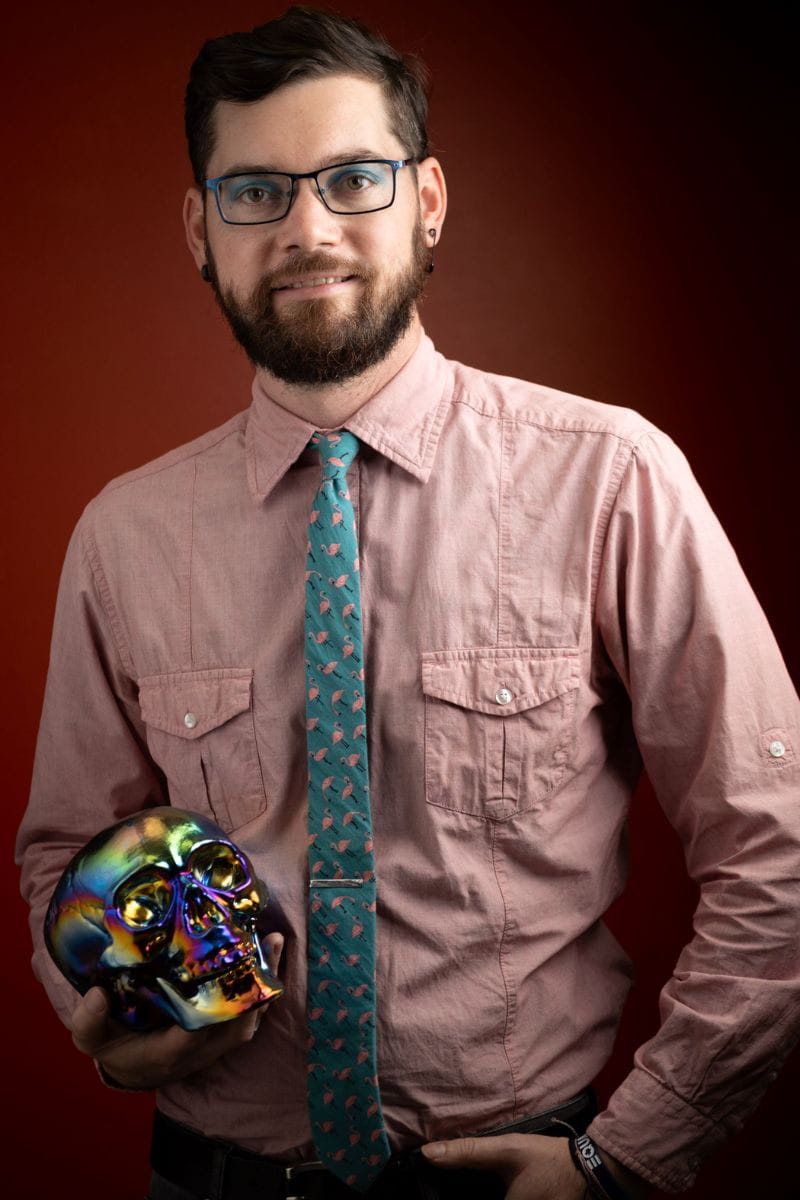The signature line of Daniel Kasper's email, where a sender might normally include an inspirational quote, is a little different than most. His reads: "It isn't fair, it isn't right," Mrs. Hutchinson screamed, and they were upon her.
It's the closing sentence of Shirley Jackson's famous short story "The Lottery," a classic work of Gothic fiction about a seemingly idyllic small town's horrifying ritual in which—spoiler alert—a citizen is chosen to be stoned to death as a sacrifice to ensure a good harvest. For Kasper, a lecturer in UTA's Department of English, ending his email with that quote is a nod to his area of expertise, Gothic literature, and a fun way to honor one of the genre's seminal works.
Kasper's passion for the Gothic literature shines especially strong in the days leading up to Halloween. In this UTA Q&A, Kasper explains how the genre has come to influence popular entertainment today, and just why so many people enjoy celebrating all things creepy, especially this time of year.
Your area of focus is Gothic literature, particularly "Dracula." How did that come to be?
Kasper: It probably started from watching "Buffy the Vampire Slayer" as a kid, and it kind of snowballed from there. I wrote my college application letters about "Interview with the Vampire," and then when I went to grad school, I realized that I wanted to spend a lot of time thinking about "Dracula." When I eventually wrote my dissertation, one of my chapters was on "Dracula" and feminism.
Why do you think people are so drawn to dark, scary or suspenseful stories, like the ones we find in Gothic literature?
Kasper: A lot of people are drawn to the macabre probably because you can sort of play around with the idea of death in a very helpful, healthy way. It's a kind of catharsis that human beings tend to crave. These works create a sort of nightmare "play space" where bad things can happen, and we can psychically deal with the possibility of them happening. And obviously, they're exaggerated. Vampires don't really exist, but they can represent various other kinds of real psychic or traumatic damage experienced by human beings.
How has Gothic literature of the past come to play into or shape our modern understanding of horror?
Kasper: The thing about horror and Gothic fiction and film is that once you reach a certain point in the story, the regular rules of reality stop applying. It becomes a nightmare world. In the Gothic realm, everything is horrible. But what that means is that because our society's rules get suspended in the nightmare scenario, all of the rules get suspended. So characters like Mina in "Dracula" or Merricat in "We Have Always Lived in the Castle" or even Laurie Strode in the "Halloween" franchise can do things in the nightmare world that they wouldn't be able to do in reality. A lot of Gothic fiction appeals to women specifically for that reason, because they are allowed a certain amount of power that they wouldn't ordinarily get in a realist novel or a realist film. So paradoxically, even though the Gothic is full of dangers, it's also full of freedom because the rules of reality are suspended.
Do you have any reading recommendations for people who want to dip their toes into the spirit of the season?
Kasper: For people who aren't super into horror, "The Turn of the Screw" by Henry James is his most famous ghost story. It's not particularly violent or horrific, especially not like what you would see or experience in TV or in film. In my "Vampire, Zombie, Werewolf, Ghost" class, I just taught "Lot No. 249" by Arthur Conan Doyle, which is a mummy story about zombies. If somebody wanted to read a more current piece, Kelly Link's story "Stone Animals" is about a haunted house that's overrun by rabbits. Really, for anybody out there who doesn't think they're into horror or Gothic storytelling, the beauty of the genre is that there are so many different variations of it that you could probably find a niche that would appeal to you.







